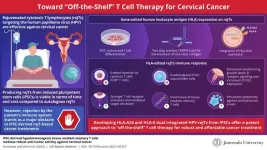Health disparities have been consistently associated with delayed screening, which then contributes to higher mortality rates among both Hispanic and Black populations. Moreover, poverty, lack of education, neighborhood disadvantage, residential segregation, racial discrimination, lack of social support and social isolation also play a role in the breast cancer stage at diagnosis.
Researchers from Florida Atlantic University’s Schmidt College of Medicine conducted a scoping review of 72 peer-reviewed observational studies published between 2013 and 2023 to identify the major SDOH that hinder breast cancer screening in women aged 40 and older in the U.S. They focused on race/ethnicity, employment, education, food security, insurance status, housing and access to quality health care.
Results, published in the journal Frontiers in Public Health, showed that among the various SDOH identified, those related to socioeconomic status exhibited the highest frequency. Specifically, factors such as income, education level, employment status, birthplace/citizenship, acculturation/years lived in the U.S., marital status, social support and number of children were among the key elements.
Access to health care emerged as a statistically significant theme (61 percent of the studies), with sub-categories such as insurance status, accessibility of health care services and providers, insurance coverage, access to mammography facilities, insurance co-payments, time from breast cancer diagnosis to first treatment, travel time to clinic and county uninsured rate.
Insurance status was the most reported sub-categorical factor of access to quality health care. Many of the studies in the review demonstrated a strong association between a lack of health insurance and a lower rate of breast cancer screening.
“One of the most influential roles of social determinants of health lies within the realm of equitable access,” said Lea Sacca, Ph.D., senior author and an assistant professor in the Department of Population Health and Social Medicine, FAU Schmidt College of Medicine. “Results from our research could inform future evidence-based interventions aimed at addressing the underlying factors contributing to low screening rates for breast cancer in the country.”
Race/ethnicity, sex/gender and sexual orientation were additional factors reported. Fifty-eight percent of the studies showed statistical significance in the social and community context category, with the highest sub-categories being age and ethnicity. Ethnic minority women, with the exception of those identifying as Asian, had a lower likelihood of being screened and Black women experienced a higher risk of diagnosis upon first screening. White bisexual women had significantly lower mammography rates than white heterosexual women, while mammography rates were significantly higher for bisexual Black women than for heterosexual Black women.
Language was the third highest issue, highlighting its significance as an influential factor of screening behavior. In addition, 38 percent of the studies exhibited statistical significance in the economic stability category, with income level (27 percent) being the most common sub-categorical indicator emphasized. Women with estimated household incomes greater than $38,100 have been found to have rates of repeat mammography higher than those of women below $25,399.
Both high levels of poverty and impoverished rural regions were associated with lower screening rates. In addition to household income, food security was another influential factor of mammography rates.
“When women are forced to choose between feeding their families and pursuing preventive care, mammography becomes more of a luxury than lifesaving care,” said Sacca. “Women facing food insecurity have a 54 percent lower likelihood of getting a mammogram.”
Thirty-three percent of the articles showed statistical significance in education access and quality as strong indicators of mammography rate, with the highest level of education completed acting as the strongest sub-categorical factor.
Location, transportation, housing, county poverty rate, internet access, area deprivation index, diversity index, perceived discrimination, health beliefs and trust in health care providers/systems and cultural and religious beliefs also were cited in the review. For example, fatalism-emphasizing religions (fate or destiny), were associated with less screening adherences and maintenance of modesty did not prove a significant limitation for women receiving mammograms.
“Improving patient-provider communication, addressing perceived discrimination and improving trust in the health care system is necessary to improve screening rates across all demographics,” said Sacca. “Additionally, structural efforts to improve health insurance coverage, language proficiency and transportation services could be beneficial. These steps will need to involve the local community to develop community-tailored educational campaigns to reinforce the importance of establishing regular mammogram screenings.”
Study co-authors are FAU second-year medical students Vama Jhumkhawala; Diana Lobaina; Goodness Okwaraji; Yasmine Zerrouki; Sara Burgoa; Adeife Marciniak; Sebastian Densley; Meera Rao; and a post-graduate biology student, Daniella Diaz, FAU Charles E. Schmidt College of Science; and Michelle Knecht, librarian, FAU Schmidt College of Medicine.
- FAU -
About the Charles E. Schmidt College of Medicine:
FAU’s Charles E. Schmidt College of Medicine is one of approximately 156 accredited medical schools in the U.S. The college was launched in 2010, when the Florida Board of Governors made a landmark decision authorizing FAU to award the M.D. degree. After receiving approval from the Florida legislature and the governor, it became the 134th allopathic medical school in North America. With more than 70 full and part-time faculty and more than 1,300 affiliate faculty, the college matriculates 64 medical students each year and has been nationally recognized for its innovative curriculum. To further FAU’s commitment to increase much needed medical residency positions in Palm Beach County and to ensure that the region will continue to have an adequate and well-trained physician workforce, the FAU Charles E. Schmidt College of Medicine Consortium for Graduate Medical Education (GME) was formed in fall 2011 with five leading hospitals in Palm Beach County. The Consortium currently has five Accreditation Council for Graduate Medical Education (ACGME) accredited residencies including internal medicine, surgery, emergency medicine, psychiatry, and neurology.
About Florida Atlantic University:
Florida Atlantic University, established in 1961, officially opened its doors in 1964 as the fifth public university in Florida. Today, the University serves more than 30,000 undergraduate and graduate students across six campuses located along the southeast Florida coast. In recent years, the University has doubled its research expenditures and outpaced its peers in student achievement rates. Through the coexistence of access and excellence, FAU embodies an innovative model where traditional achievement gaps vanish. FAU is designated a Hispanic-serving institution, ranked as a top public university by U.S. News & World Report and a High Research Activity institution by the Carnegie Foundation for the Advancement of Teaching. For more information, visit www.fau.edu.
END




